(This article was written by Hazel Markham and was included in the secretary’s book that may have been sent to the Extension Office. Permission was granted by the author to Mrs. Elsie Boutelle to be included in her book Oronoco, Past and Present, which she wrote in 1983. Elsie’s entire book is also on display at the History Center.)
It seemed impossible to substantiate the earliest date that was the actual beginning of the Oronoco Optimists 4-H Club. From interviews with some of the people who were there at the meeting in which the name was selected, it appears that the Oronoco Optimists existed for at least a year before it became officially recognized by the Olmsted County 4-H office.
Karl Glabe recalls two teachers, Catherine Brockner and Florence Buschow, from the Oronoco Public School, who came to him and asked him to help start a 4-H club. Since school records show that Miss Brockner started teaching in Oronoco in the fall of 1934, it seems likely that the year to which Karl refers must have been 1934. Karl says about 60 or 70 young people showed up at the first meeting. Many of that number failed to continue with the club when they realized something more than just a place to go and have fun. The remaining members formed the Oronoco Optimists, and began the organization as a learning and helping group. However, they also had fun. They held picnics, hayrides, basket socials, and square dances. They played games, a favorite being “Winkum.”
The Oronoco Optimists may have selected their name from the outlook that many of them had. It was unusual in those times since the depression had caused hardships for nearly everyone. Maybe not so unusual, though, for many people say, “All we had, was our optimism.” Many members who were interviewed, recall being at the naming meeting, but can’t remember how the choice came about.
In 1935, Olmsted County Extension Agent, Henry, Henry Mayo, and 4-H Agent, Mrs. Edna Coulson encouraged existing clubs throughout the county to become official 4-H clubs. They also helped new clubs to form. For the first time since 1931, there were a number of 4-H clubs in Olmsted County, and one of them was the Oronoco Optimists 4-H Club. So its official birth year was 1935. At that time there were 18 clubs in Olmsted County.
Going back a little, in 1930, the county agent’s annual report mentions no 4-H clubs, but in 1931, ten 4-H clubs are mentioned. One of the ten was the Oronoco Willing Workers. It is not known if this was a fore-runner of the Optimists. The officers of the Willing Workers were as follows: President: Virginia Postier; Vice President and News Reporter: Dorothy Newell; and Secretary and Treasurer: Frances Becker.
The depression created a hardship for organizations of this type, and the government couldn’t provide help for a few years. Whether these are the years or not, in 1932, 1933, and 1934, there was almost no 4-H work being done in Olmsted County according to the Emergency Agriculture Agents’ annual reports.
When the official Oronoco Optimists 4-H Club was recognized in 1935, the leaders chosen were Mr. and Mrs. William Lubahn, Karl Glabe, and Mr. and Mrs. Edwin Kujath. Others who helped were the aforementioned teachers, and also Mr. and Mrs. Robert Heins The officers’ names are not available, nor the number of members because no secretary’s book was turned in that year. A peak year was 1939 when there were 50 members. The meetings were held in the Oronoco School House and sometimes in the members’ homes. Lunch was furnished by the parents of members, and also the members themselves. The average age of the 4-H members at that time was much older than the present age. Many teenagers were members, and some were as old as 21. The 4-H meeting was a high point in the lives of many of the members, and also their families. The whole family would go to the meetings. Remember that this was in the days before television. Automobile travel was done only on a minimal scale. The family car didn’t go unless it was full, and then it didn’t go afar. Some of the young people found 4-H meetings their only opportunity to meet members of the opposite sex, unless they met them in church gatherings; or it they were lucky enough to go to school beyond the eighth grade, which many of them were not.
It might be said that these early years were the “hey-day” for the Oronoco Optimists. Its membership was great both in number, and in active participation. Its leadership was outstanding. The County 4-H was becoming able to do more for 4-H work than it ever had in the past. It was also able at that time to give more attention towards helping the few existing clubs, than it has since, because of the increase in the number of clubs throughout the country.
Although the Oronoco Optimists Club was the farthest North in the County, they held year-around meetings. They had a club tour every year, and received a seal on their charter and a blue ribbon for their high rating on Mr. Ray Aune’s achievement chart. They participated in county events, exhibited at the county fair, and sent winners to the state fair. They sent members to 4-H camp at Kamp Kahler, Camp Frontenac, and to St. Paul for 4-H Week. They had a one-act play each year for several years, and their entries in country home talent shows were usually top winners. Talent was abundant in the club in those days.
Gerald Tiedeman and his brother, Virgil, entertained the group with instrumental duets. Gerald played the accordion and Virgil played both the guitar and the mouth organ. Listeners enjoyed their old-time dance music. Together with their father Louis, who played the violin, they also provided the dance music for many a house party. Gerald and Virgil helped the Oronoco Optimists to win blue ribbons in the county talent contests.
Another pair of Oronoco Optimists entertained at their club meetings and were also featured in county events and on the 4-H radio program. They were sisters Vina and Virginia Culver, who harmonized and accompanied themselves on their guitars. Their specialty was singing lovely ballads such as “Old Shep,” “Cowboy Jack,” and “My Pretty Quadroon.”
Others entertained at the meetings by singing or playing instruments. Still others told jokes and riddles, or gave short literary or humorous readings.
The Oronoco Optimists had a booth at the fair every year in those early years. They were also kitten ball champions of Olmsted County for a number of seasons. The girls had a kitten ball team, too, and had their own uniforms; however, it was the boys’ team that won the championships. William Lubahn was their manager.
Those were the best of times in other ways, too. The Rochester businessmen were doing great things for 4-H work. The radio station gave 4-H a chance to use their medium for their talents, and the local newspaper gave 4-H much coverage, even to the point of listing every member’s fair exhibit placing in the newspaper. In those days, if a club’s reporter sent a 4-H story to the paper, it would be printed in the Post Bulletin.
The Gypsy Frolic was an entirely different type of even then than it is today. The Rochester Chamber of Commerce sponsored the event, and it was held in the Mayo Civic Auditorium. The attendance was usually in the neighborhood of 6000. Games were played, dances were held, sometimes ____sing a big name band and professional entertainers. A pageant was conducted during the evening, in which a queen and her attendants were chosen and crowned. These queen candidates were chosen on the basis of the percentage of ticket sales their club was responsible for. They were usually very lovely young ladies chosen by their club members to represent them . After the make-up committee got through with them, their beauty was all but hidden behind the typical gypsy-type costumes and make up. Pictures of the 1970 Gypsy Frolic are on file at the Olmsted County Extension Office contained in the annual report for that year. These include a picture of the queen and her court when Oronoco Optimists’ Virginia Culver was queen.
Other Oronoco Optimists who made history by being mentioned in the county agents’ annual reports were Willis Lubahn who took his champion Chester-White pig Patsy to the Minnesota State Fair in 1936; Orville Lubahn, who took his sheep in 1937; and Russell Morrow, who took his colt in 1938. Champions in different years were for corn, Harvey Mohlke; pig, Ernest Lubahn; and canning demonstrations, Gladys Lubahn and Marilyn Swarthout. In 1941 Myra Mohlke was an attendant to the Gypsy Frolic queen, and in 1942 Gladys Lubahn received that same honor. There were other members mentioned for their special contributions. Here is a partial list: Corn winners were Arvin Lubahn, Calvin Lubahn, and Bernard Markham. Winners for potatoes were Orville Lubahn, Gerald Tiedeman, and Larry Stolp. Their leader, William Lubahn, also served on the county board of directors.
The Oronoco Optimists membership dropped in 1944, very likely due to the World War II. Many of the members went into the armed forces. Others became too busy on the farm and in factories in their efforts to help the defense of our country. Gerald Tiedeman, secretary of the club in 1944, wrote this poignant message in his secretary’s book. “When this club was started, it was much the same as the beginning of the
United States. It was started by just a handful. Then it almost ended when a few quit, just as when starvation hit in 1621, the first winter that a group of white men had spent in a group or colony. Then it grew steadily. It flourished, but then another crisis struck, and from this blow, it has not recovered. It’s this war, World War II.”
Also in 1944, an attempt was made by the county 4-H agent , along with the help of the schools to increase the number of 4-H clubs. At that time, the Oronoco Bushwhackers 4-H club was formed with seven members under the leadership of Fern Cowden. However, that club did not exist in the 1945 and later annual reports.
The Oronoco Optimists 4-H Club did continue, though, but they participated somewhat less actively with each succeeding year.
A complete change-over of membership and leaders took place. As the youngsters graduated from 4-H, their parents, of whom many were leaders, retired from leadership, and new members and leaders showed up on the rolls. Mr. and Mrs. William Lubahn had been leaders of the Oronoco Optimists for 15 years. All of their nine children were members over the course of that time. In 1951, the Lubahn children were no longer members. The parents retired as leaders at that time. Mrs. And Mrs. Lubahn contributed much toward making the Oronoco Optimists 4-H Club the success that it was.
A list of leaders accompanies this report. There is also a partial list of members; however, this list is not complete, because all of the secretaries’ books were not turned into the county office. These secretaries’ books are the only documents the extension office retains except the county agent’s annual reports, which do not contain much of each club’s individual information. So if no secretary’s book was turned in, then no record of members exists for that year. There are also some youngsters who attended 4-H meetings, but never enrolled as members, and these will not be listed either.
After 1951, the club continued to decrease in membership and in participation in county events. Throughout the county the membership has gradually switched from mostly rural to mostly urban and suburban. Another situation that began to occur was the competition from the other clubs in the area for our potential members. Many parents became unable to help because of mothers working, and other demands on their time. The polio epidemic caused a membership drop and less participation because of the public apprehension about contagion from county-wide meetings. The discovery of a preventive vaccine has helped this situation to be resolved.
Mr. and Mrs. Marvin Muller, and others were very helpful is the club throughout these years. Winners on the county level during this period, were Judy King, good grooming, and Kenneth Hoerner for his corn and potato exhibits. In 1957 the club won a blue ribbon for its one-act play.
In 1959 the club did not complete the year and did not reorganize the following year, nor the one after that.
Rebirth came in the fall of 1961, with the aid of Mr. and Mrs. Jerry McVay, Mrs. Wilbur Krause, and Mrs. Barbara Smallbrock. This proved to be another flourishing time for the Oronoco Optimists, as membership peaked to 37 in 1963. Mr. and Mrs. McVay moved from the community within the first year. New leaders were chosen, and again, meeting in the Oronoco Schoolhouse, year-‘round meetings were held, and active county participation occurred. The members demonstrated and entertained at their local meetings. Games were played, even “Winkum” came back to life. They exhibited in the county fair and had a booth nearly every year. They won a blue ribbon for their 1963 booth based on dairy foods, and another blue ribbon for their miniature village of Oronoco in 1968.
In 1963 Deborah Millard and Mark Fuerstenau gave performances in the Share-the-Fun Festival. The following year, a group of “hillbillies” were sent to the festival to sing “I Like Mountain Music.”
In 1965 a quartet of girls, Cheryl Tiedeman, Jeannine Markham, Rose Lubahn, and Carol Lubahn sang “Downtown” at the talent show. It is believed that their performance was the last entry of the Oronoco Optimists 4-H Club in the Share the Fun Festival up to the present time. There was still talent among its members; however, they seemed to be reluctant to perform in public. Perhaps, in this day and age, when television and electronic equipment have allowed performances to become more professional, the amateur entertainer feels inadequate. Many youngsters, today, are involved in so many activities, they hardly have time to perfect their performances. Also audiences are less appreciative now than they were in the past. We are all such experts today that we have nothing but unkind criticism for the unpolished performer. We are all losers in this respect. Much can be gained from the opportunity to display amateur talent, both by the performers and the audience.
Membership dropped to between 12 to 17 in the late 1960s. This, in a time when the Olmsted County membership had increased from 539 in 1935 to 1003 in 1966. The number of clubs went from 17 to 37 in this period.
However, the Oronoco Optimists left were active members, and their leadership was good, and so they have remained active up to the present time.
In 1975 upon the graduation from 4-H of the Siems and Campbell families, it appeared as though membership would drop too low for survival. A membership drive was held and new members attracted. That fall, there were 20 members. However, in March 1976, the membership was down to 15. Since 4-H has something to offer to its members, it would be great to see the Oronoco Optimists continue, and grow in the future.
Let’s encourage our youngsters to get involved in 4-H. Members can make their club whatever they choose. It can be a chance for them to become better persons than they might have been without it. In these days of great population and large schools, this type of membership in a local 4-H club can help youngsters become more a person and less a number.
A chart of membership accompanies this report as well as a list of leaders and members.
Much thanks to all who helped on this report. Special thanks to Mrs. Shirley Koenig, Secretary at the Olmsted County Extension Office, all club secretaries who turned in their books, the county agents who made out their annual reports, and Mrs. Alton W. Pagel, who wrote “The 4-H Store—Olmsted County,” and to the numerous people who granted me personal interviews, thank you all so very much.
Sincerely, Hazel Markham
Membership Totals:
1934 – Approx 60-70
1935 – Approx 42
1936 – 32
1937 – 37
1938 – 38
1939 – 50
1940 – 48
1941 – 45
1942 -1943 -26
1944 – 22
1945 – 21
1946 – 12
1947 – 16
1948 – 33
1949 – 50
1950 – 33
1951 – 16
1952 – 14
1953 – 26
1954 – 12
1955 – 21
1956 -1957 -1958 -12
1959 – 12
1960 – 0
1961 – 0
1962 – 29
1963 – 37
1964 – 22
1965 – 17
1966 – 19
1967 – 13
1968 – 16
1969 – 16
1970 – 17
1971 – 14
1972 – 15
1973 – 12
1974 – 12
1975 – 11
1976 – 15
* The year used is the second figure in a two figure year. For example: 1934 is the year 1933–1934. This is the year in which the fair was held and the member completed his projects.
A Partial List of Members from 1934 to 1976:
Ackerman, Delphine – 1941
Ackerman, Dorrine – 1941
Ackerman, Edwin – 1951, 1952
Atkinson, Kay – 1947, 1949
Becker, Hazel – 1937
Bowers, Darlene – 1954, 1955
Bradley, Michelle – 1976
Brown, Shirley – 1941
Campbell, Keith – 1962 – 1968
Campbell, Kent – 1965 – 1974
Carlon, Catherine – 1955
Carlon, Edward – 1955
Carlon, Sylvia – 1949
Carroll, James – 1944, ‘45, ‘49, ‘50
Carroll, Nancy – 1952, 1955
Carroll, Suzanne – 1949, ’50, ‘52
Clark, Allen – 1937
Clark, Carol – 1940-’41, ‘44
Clark, David – 1949-1950
Clark, Donald – 1949-1950
Clark, Karen – 1950
Clark, Ruth – 1937 thru 1941
Clark, Shirley – 1937 thru 1940
Cowden, Eddie – 1955
Cowden, Joan – 1937
Cowden, Marian – 1937
Culver, Aaron – 1945, ’46. ‘47
Culver, Grant – 1940 – 1941
Culver, Roy (Walter) – ’44 thru ‘47
Culver, Vina – ’34 – ‘40
Culver, Virginia – ’34 – ‘41
Dallman, Zoei – 1976
Dingler, Blaine – 1938
Ferber, Lori – 1974 thru 1976
Ferguson, Dale – 1955
Ferguson, Duane – 1955
Fogarty, Doreen – 1950
Frutiger, Carolyn – 1952
Frutiger, Ruth – 1944 thru 1947
Frutiger Virginia (Peggy) – ‘47 thru ‘5 3
Frutiger, William – 1944 thru 1953
Fuchs, Kenneth – 1950, 1955
Fuerstenau, Charles – 1963
Fuerstenau, Jim – 1963
Fuerstenau, Joel – 1963
Fuerstenau, Mark – 1963
Gillies, James – 1947 thru 1950
Glasenapp, Larry – 1949-1950
Glasenapp, Richard – 1949–1950
Greene, David – 1954
Haglund, Brenda – 1975 – 1976
Haglund, Lisa – 1976
Haglund, Marcia – 1963 – 1964
Haglund, Marilyn – 1937 – 1938
Hall, Lyle W. – 1937 – 1938
Hanson, Alan – 1976
Hanson, Alana – 1976
Hardtke, Charles – 1937 – 1938
Harvey, Harold – 1947
Harwood, Boyd – 1945
Hawkins, David – 1955
Hawkins, Richard – 1955
Heins, Katherine – 1937
Henderson, Areline – 1940, 1941
Hoerner, Kenneth – 1958 – 1959
Hoffman, Julie – 1976
Holland, Helen – 1941
Horsman, Dana – 1955
Horsman, David – 1955
Horsman, Marcia – 1963, 1964, 1965
Horsman, Robert – 1955
House, Cindy – 1969 thru 1974
House, Craig – 1970 – 1971
House, Glenda – 1971 – 1974
House, Pamela – 1969 – 1974
Hovel, Benjamin – 1968
Irelan, Jane – 1966 thru 1970
Irelan, Robert – 1966 thru 1968
Johnson, Kathleen – 1963 thru 1966
Johnson, Laura – 1963 – 1966
King, Dolores – 1945, 1946
King, Duane – 1964
King, Gary – 1964
King, Harold – 1938
King, Judy – 1955
King, Raymond – 1944, 1945
King, Sherrie – 1950
King, Shirley – 1964
King, Willard – 1944, 1945, 1946
Koenig, Betty – 1947
Koenig, Bob – 1944 thru 1949
Koenig, Charles – 1949
Koenig, Cyril – 1938 –thru 1941
Koenig, Gordon – 1950
Koenig, Gretta Mae – 1939 thru 1941
Koenig, Jerry – 1963
Koenig, Lonna – 1963
Koenig, LuAnn – 1963
Krause, Albert – 1962 thru 1964
Krause, Carl – 1962 thru 1964
Krause, Margaret – 1962 thru 1964
Krause, Merle – 1962 thru 1964
Kujath, Audrey – 1940
Kujath, Marilyn – 1936 thru 1939
Kujath, Mentor – 1936 thru 1939
Kunz, Dorothy – 1937 – 1939
Lubahn, Arvin – 1935 thru 1944
Lubahn, Calvin – 1935 thru 1944
Lubahn, Carol – 1964, 1965
Lubahn, Darrell – 1944 thru 1950
Lubahn, Ernest – 1940 thru 1948
Lubahn, Gladys – 1936 thru 1946
Lubahn, Gordon – 1949 thru 1952
Lubahn, Lyle – 1939 thru 1948
Lubahn, Orville – 1936 thru 1941
Lubahn, Robert – 1964
Lubahn, Rose Ann – 1963 thru 1965
Lubahn, Willis – 1935 thru 1942
Maricle, Christine – 1965 thru 1967
Maricle, Clayton – 1967
Maricle, Roxanne – 1965 thru 1967
Markham, Bernard – 1940 thru 1946
Markham, Doris Mae – 1940-1941
Markham, Howard – 1975-1976
Markham, Jane Ellen – 1962 thru 1964
Markham, Jeannine – 1962 thru 1966
Markham, Leon – 1944 thru 1947
Markham, Leonard – 1940, 1941
Markham, Nancy – 1962
Markham, Patricia – 1969 thru 1974
Markham, Rita – 1972 thru 1976
Markham, Thomas – 1968, 1969
Markham, William C. – 1940 thru 1944
Martin, Mary – 1972
Mattox, Sue- 1955
Meurley, James – 1940
Meurley, Darlene – 1949, 1950
Meyers, Darlene – 1949, 1950
Meyers, Kathy – 1963
Meyers, Violet – 1949, 1950
Millard, Debra- 1963 thru 1966
Millard, Laurrine – 1963 thru 1966
Millard, Nancy – 1965, 1966
Millard, Sandra – 1963 thru 1966
Mills, Sylvia – 1950
Mohlke, Ervin – 1935 thru 1938
Mohlke, Harold – 1940, 1941
Mohlke, Harvey – 1938 thru 1941
Mohlke, John – 1963
Mohlke, Myra – 1938 thru 1941
Mohlke, Steven – 1962
Morrow, Russell – 1937 thru 1941
Moulton, Lavahn – 1941
Muller, Ann – 1955
Muller, Joy – 1952 thru 1955
Muller, Scott – 1955
Myhre, Grant – 1962
Nelson, Iva – 1938
Ondler, Lee – 1970 thru 1972
Ottman, Orin – 1941
Pieffer, Donna – 1944
Postier, Lorraine – 1939, 1940
Postier, Richard – 1935 thru 1937
Postier, Russell – 1938, 1939
Rawson, Bruce – 1939
Richardt, Leslie – 1940
Riettman, Irene – 1936
Riettman, Sandra – 1951
Ritter, Everett 1938, 1939
Robb, Albert – 1940
Robb, Floyd – 1940
Robb, Helen – 1940
Robb, Ruth – 1940
Rodrick, Mary Ruth – 1041
Roeber, Julie – 1969
Rollie, Connie – 1968 thru 1972
Rollie, Laurie – 1968 thru 1975
Roseboom, James – 1950
Roseboom, John – 1950
Rucker, Cindy – 1976
Rucker, Ronnie – 1976
Rueber, Floyd – 1955
Scharberg, Rhonda – 1971 thru 1973
Schmidt, Deanna – 1949 thru 1952
Schriever, Floyd – 1935 thru 1937
Schriever, Howard – 1937 thru 1945
Schriever, Lester 0 1944 thru 1948
Shaler, Sheri – 1949, 1950
Siems, Allen – 1940, 1941
Siems, Dennis – 1962 thru 1970
Siems, Douglas – 1966 thru 1973
Siems, Joyce – 1945 thru 1947
Siems, Kenneth – 1950
Siems, Margaret – 1945 thru 1942
Siems, Olive – 1940, 1941
Siems, Pamela – 1963 thru 1973
Siems, Patricia – 1965 thru 1974
Siems, Vern – 1940
Smallbrock, Madeline – 1962
Smallbrock, Marshal – 1962
Smallbrock, Myron – 1962
Smith, Myrtle – 1937 thru 1941
Stahman, Tim – 1976
Stephan, Sharon, 1950
Stewart, Barbara – 1950, 1951
Stewart, Raymond – 1937, 1938
Stiller, Gordon – 1962
Stiller, Marsha – 1962
Stolp, Barbara – 1955
Stolp, Beverly – 1950 thru 1952
Stolp, Larry – 1947 thru 1951
Stolp, Sandra – 1955
Stolp, Sharon – 1955
Streiff, Donna – 1949, 1950
Streiff, Janet – 1953
Swarthout, Glen – 1940, 1941
Swarthout, Marilyn – 1937 thru 1941
Swarthout, Wayne – 1941
Templeton, Amy – 1976
Tiedeman, Cheryl – 1962 thru 1969
Tiedeman, Gerald – 1937 thru 1946
Tiedeman, Jean – 1967 thru 1976
Tiedeman, John – 1962 thru 1971
Tiedeman, Virgil – 1934 thru 1941
Thompson, Joe – 1949, 1950
Tupper, Eric – 1975
Tupper, Paul – 1975
Tupper, Peter – 1975
Van Kirk, Joe – 1949
Van Kirk, Jimmy – 1949
Vanderberg, Catherine – 1939
Vanderberg, Gordon – 1961
Vanderberg, Margaret – 1939
Vanderberg, William – 1937 thru 1939
Warner, Shirley – 1950
Whipple, Dolores – 1952
Wilke, Harlow – 1947 thru 1950
Wilke, Shirley – 1947 thru 1950
Williamson, Cecil – 1936 thru 1939
Williamson, Doris – 1940
Williamson, Dorothy – 1936 thru 1940
Williamson, Mabel – 1936 thru 1940
Wilson, Paul – 1937 thru 1939
Wittlief, Esther – 1939 thru 1941
Wittlief, Gerald – 1949 thru 1952
Wittlief, Larry – 1949 thru 1952
Wittlief, Matthew – 1967, 1968
Oronoco Optimists 4-H Club Leaders
Bowers, Mrs. Lyle – 1954
Brookner, Catherine – 1934
Buschow, Florence – 1934
Campbell, John – 1966
Campbell, Mrs. John – 1963 thru 1973
Carlon, John – 1958, 1959
Carlon, Mrs. John – 1958, 1959
Culver, Ross – 1941 thru 1943
Culver, Mrs. Ross – 1941 thru 1943
Ferber, Mrs. James – 1975, 1976
Frutiger, Louis – 1946, 1947
Frutiger, Mrs. Louis – 1946, 1947
Glabe, Karl – 1934 thru 1938
Haglund, Ronald – 1976
Haglund, Mrs. Ron (Pat) – 1976
Hanson, Mrs. Alan – 1976
Heins, Robert – 1934
Heins, Mrs. Robert – 1934
Hoerner, Anthony – 1958, 1959
Hoerner, Mrs. Anthony – 1958, 1959
Holzer, Howard – 1957
Horsman, Ervin – 1957 thru 1959
Horsman, Mrs. Ervin – 1957 thru 1959
House, Mrs. Donald – 17 thru 1973
King, Andrew – 1946
King, Norman – 1951
King, Mrs. Norman – 1951
Krause, Mrs. Wilbur – 1962, 1963
Kujath, Mrs. Edwin – 1935 thru 1940
Lubahn, William – 1936 thru 1950
Lubahn, Mrs. William – 1936 thru 1950
Lubahn, Mrs. Orville – 1964, 1965
Markham, Mrs. Wm – 1963, ‘64, ’65, ’66, 69, ‘70, ‘72, ‘73, ‘74, & ‘76
McVay, Mrs. Gerald – 1962
Millard, Cecil – 1963 thru 1965
Muller, Marvin – 1952 thru 1959
Muller, Mrs. Marvin – 1952 thru 1958
Rucker, Merrill – 1951 thru 1953
Rucker, Mrs. Merrill – 1952 thru 1958
Rucker, Mrs. Jack – 1976
Siems, Pamela – 1974, 1975
Siems, Patricia – 1975
Siems, Harley – 1963, ’64, ’65, ‘66, ’69, ’70, ‘75
Siems, Mrs. Harley – 1970 thru 1975
Smallbrock, Mrs. Barbara – 1962
Stolp, Mrs. Melvin – 1954, 1955
Stolp, Mrs. Wesley – 1954, 1955
Swenson, Mrs. Virginia – 1968, 1969
Tiedeman, Gerald – 1951 thru 1971
Tiedeman, Mrs. Gerald – 1951 & 1963 thru 1976
Van Kirk, Joe – 1949, 1950
Van Kirk, Mrs. Joe – 1949. 1950
Ward, Mrs. Howard – 1955
Weick, Mrs. Charles – 1972, 1975
Wittlief, Mrs. Kenneth 1969
Wittlief, Randall – 1953, 1955
Wittlief, Mrs. Randall – 1953, ’55, ’58

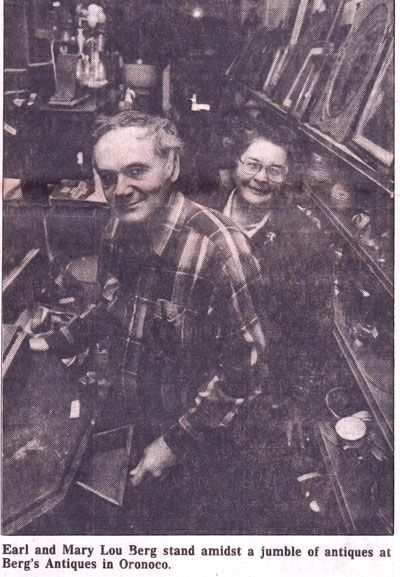
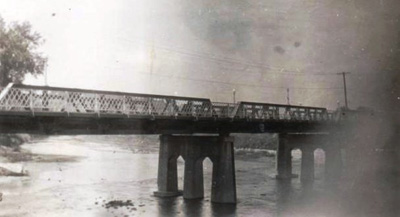
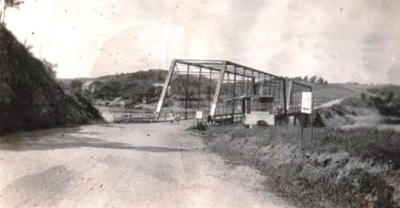
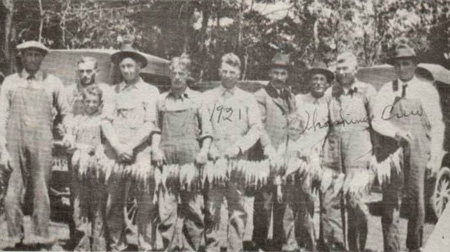

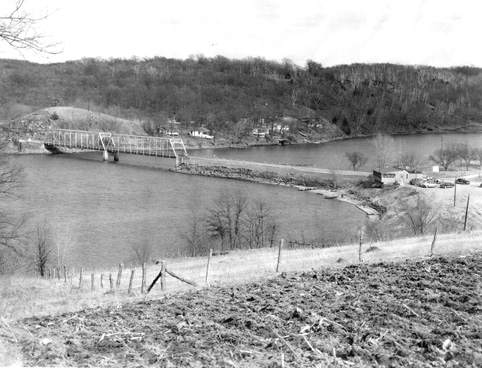
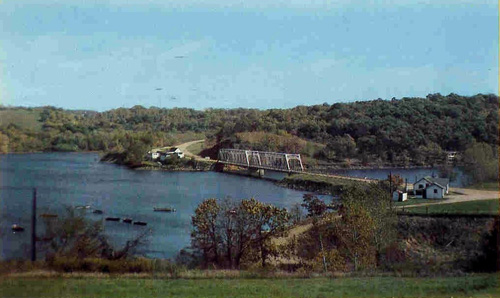

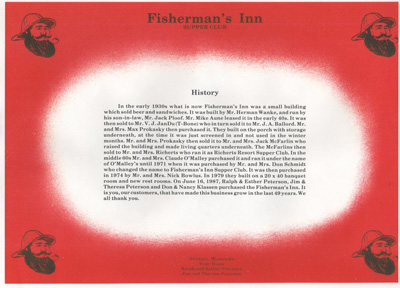

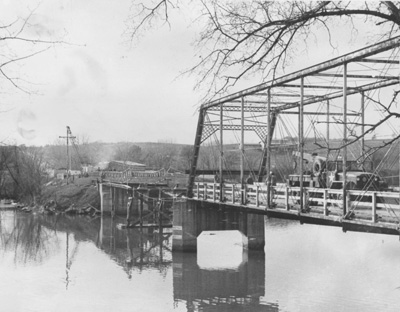

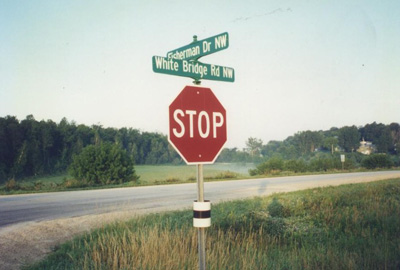


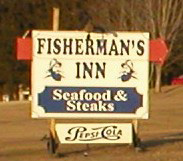
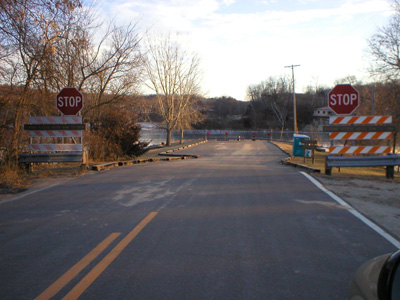
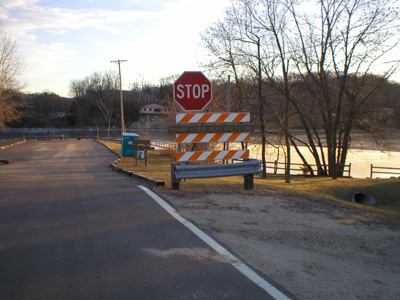
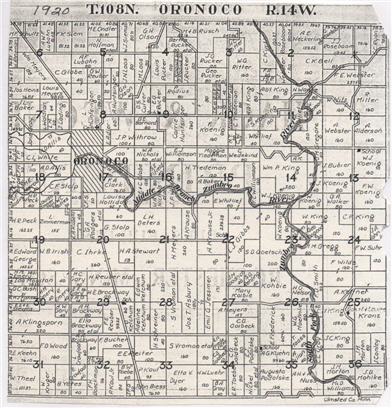
![By Jonathunder (Own work) [CC BY-SA 3.0 (http://creativecommons.org/licenses/by-sa/3.0) or GFDL (http://www.gnu.org/copyleft/fdl.html)], via Wikimedia Commons](http://www.oronocoareahistory.org/wp-content/uploads/2017/08/townhallsmall-300x172.jpg)